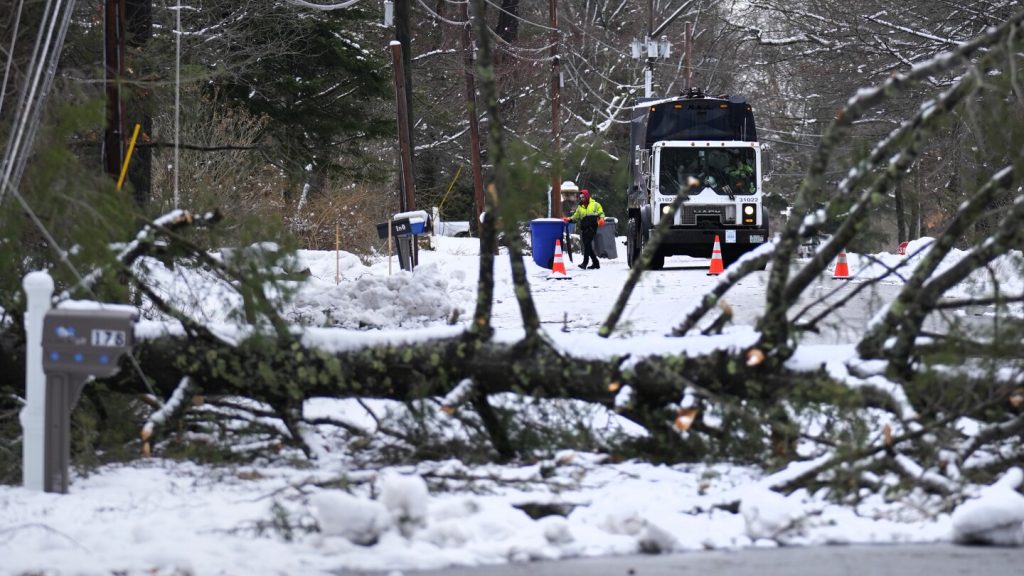Power restoration efforts in Maine and New Hampshire are still underway after a storm brought powerful winds and heavy, wet snow, leaving more than 100,000 homes and businesses without electricity. Maine’s largest electric utility warned that some customers might not have service restored until Monday or Tuesday, despite the efforts of over 1,000 line crews and 400 tree-cutting crews. The bulk of the power outages were in southern Maine, with New Hampshire also experiencing more than 10,000 outages. Central Maine Power reported more than 5,000 damage reports that workers needed to resolve during the storm, with over 300 utility poles broken.
This storm is part of a pattern of increasingly intense and frequent storms over the past decade in Maine, according to Jonathan Breed, a spokesperson for Central Maine Power. Breed attributes this trend to a changing climate, which has led to stronger and more frequent storms across the region. In this latest storm, heavy rains and high winds battered the Northeast, with gusts of up to more than 60 mph reported in parts of New England. New England saw more than a foot of snow in many areas, contributing to nearly 700,000 customers losing electricity following the biggest April nor’easter to hit the region since 2020.
The impact of the storm was felt across New England, as various states experienced tornadoes, flooding, and heavy snowfall. The storm brought chaos to the region, knocking out power for hundreds of thousands of customers and causing disruptions to daily life. Authorities worked tirelessly to restore power and clear debris from roads and properties in order to return things to normalcy. However, the scale of the damage caused by the storm, including utility poles being broken and widespread outages, made the restoration efforts challenging.
Despite the challenges, utility companies in Maine and New Hampshire mobilized their resources to address the aftermath of the storm. With over 1,000 line crews and 400 tree-cutting crews on the ground, efforts were made to restore power as quickly and safely as possible. Residents were urged to exercise caution and patience as crews worked to clear debris and repair damaged infrastructure. The commitment of these workers to restore power under difficult circumstances was evident, as they worked tirelessly to bring back electricity to homes and businesses affected by the storm.
The recent storm is part of a larger trend of extreme weather events that have been occurring more frequently in the region over the past few years. Climate change is believed to be a contributing factor to the intensity and frequency of these storms, leading to more significant impacts on communities and infrastructure. As communities in Maine and New Hampshire continue to recover from the latest storm, discussions around climate change and resilience are likely to become more prominent. Addressing the challenges posed by these extreme weather events will require coordinated efforts from policymakers, residents, and utility companies to adapt and mitigate the impacts of future storms.


